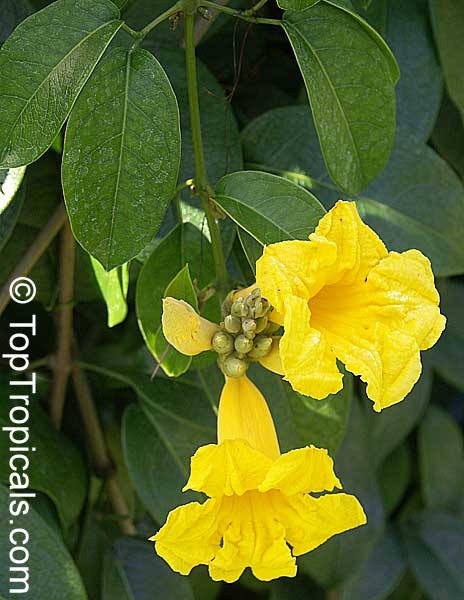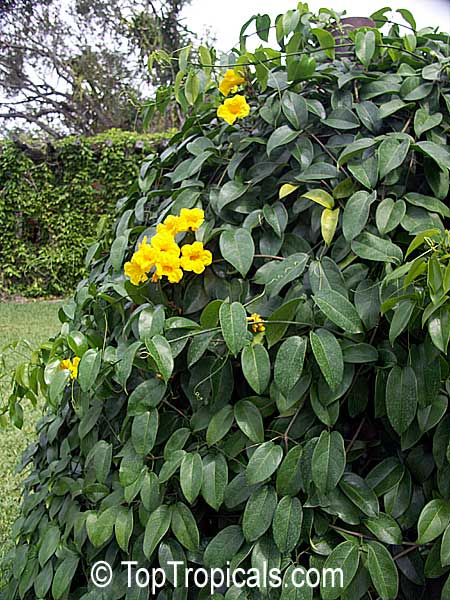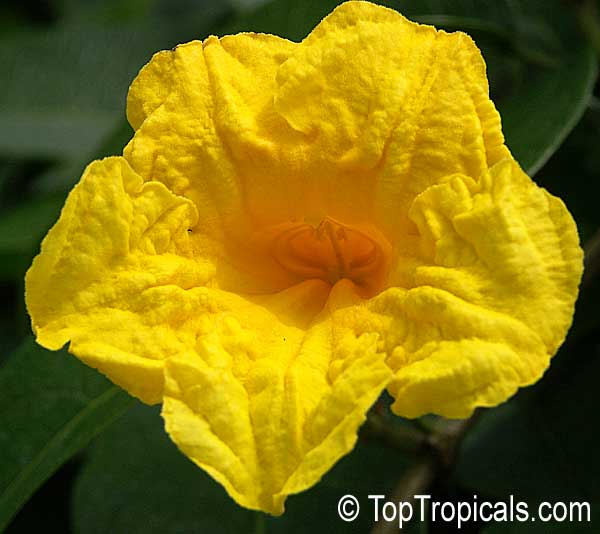Adenocalymna comosum (Yellow Trumpet Vine)
Top Tropicals Plant Encyclopedia
Botanical names: Adenocalymna comosum, Bignonia comosa
Common name: Yellow Trumpet Vine
Family: Bignoniaceae
Origin: South America





Adenocalymna comosum (Yellow Trumpet Vine) is a creeper native to South America that is renowned for its beautiful yellow and orange flowers. It thrives in full sun or semi-shade and requires regular water to remain healthy. It is suitable for growing in USDA Zones 9-11, making it a great option for gardeners living in mild climates.
Yellow Trumpet Vine is an evergreen vine and needs support to grow on, such as trellis or wire. Its leaves are small, lanceolate and arranged in opposite pairs. It flowers in early spring producing many long tubular yellow or orange flowers, grouped in terminal plume-like inflorescences. The flowers open successively and display a steady flowering state over several weeks.
If you are growing the Yellow Trumpet Vine in a pot, then it is best to use a well-draining soil with a slow-release fertiliser. In cooler climates, it is best to move the pot indoors in winter to provide protection from frost. To encourage healthy growth and flowering, deadhead any faded flowers, and prune the plant if it gets too large or leggy. A yearly prune will also help to keep the plant from becoming unruly.
With its beautiful flowers, Adenocalymna comosum is a great addition to any garden. With its easy-care requirements and ability to thrive in mild climates, the Yellow Trumpet Vine can be a real showstopper in any outdoor space.
Similar plants: Adenocalymna comosum (Yellow Trumpet Vine)
- Anemopaegma chamberlaynii (Yellow Trumpet Vine)
- Bignonia capreolata (Crossvine)
- Bignonia magnifica (Glowvine)
- Campsis grandiflora (Chinese Trumpet Creeper)
- Clytostoma callistegioides (Violet Trumpet Vine)
- Distictis buccinatoria (Mexican Blood Flower)
- Dolichandra unguis-cati (Cat's Claw)
- Jacaranda jasminoides (Dwarf Maroon Jacaranda)
- Mansoa verrucifera (Mansoa)
- Pandorea jasminoides (Pandora vine)





